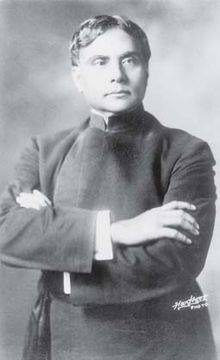Sacrifice & Service : SWAMI SHANTATMANANDA : Ramakrishna Mission
15/09/2018
SWAMI SHANTATMANANDA recounts anecdotes about two key leadership qualities that Swami Vivekananda exhibited all through his life
Swami Vivekananda suits the adage,‘Leaders are born and not made’. His leadership qualities were evident even from his boyhood. He was not a leader in the ordinary sense of the term, such as exercising one’s power and position to lord over lesser mortals. He was an extraordinary leader and his concept of leadership was founded on the twin ideals of sacrifice and service. He said, “The national ideals of India are renunciation and service. Intensify her in those channels, and the rest will take care of itself.”All other qualities such as fearlessness, ability to take team members along, leading from the front and enlightened leadership are based on these two principles. Vivekananda exhibited plenty of leadership qualities in his childhood — and all were based on these principles.
There is this famous anecdote about Vivekananda: He was setting up a trapeze with his friends and they were unable to lift the heavy beam. A sailor, who was passing by, assisted them to lift the beam and fix the trapeze. The structure collapsed and fell on the sailor’s head, injuring him. While his friends ran away in fear, Narendra Nath Dutta (Vivekananda’s childhood name) fearlessly took up the responsibility of providing first aid to the sailor and accompanied him to the hospital. He then set about collecting money for his treatment.
As he grew older, he became more and more established in these two ideals which helped him manifest all other qualities associated with leadership. His spiritual master, Ramakrishna was critically ill with throat cancer and Narendra and other disciples were serving him. Some of them were apprehensive that the disease might be contagious and were slightly guarded in their service, but not Narendra who unflinchingly served his guru in the most trying of circumstances.
Vivekananda was emphatic that a leader should be ready to obey if he were to lead others. Ramakrishna once asked him what he really wanted to achieve in his spiritual life. In reply, Narendra said that he wanted to remain absorbed in samadhi continuously, coming out only once in a while to have a morsel of food for sustenance and then again diving deep into samadhi.
Ramakrishna was not satisfied with this reply and ticked off his disciple. Why was Narendra thinking only about his own mukti, liberation? Although he was a Dhyana Siddha and meditative life came naturally to him, Narendra then and there abandoned his personal resolve and decided to work for the welfare of humanity. In fact, the rest of his life was totally dedicated to the service of humankind.
Vivekananda said, “The real test of a leader lies in holding diverse people together along the lines of their common beliefs. The leader had to be one who could accommodate a thousand minds….” The Ramakrishna Movement initiated by him, in which he brought together both his western and eastern disciples, men and women, sannyasins and householders, culminated in the creation of the Ramakrishna Order, which remains a glorious testimony to this principle.
The revered monk placed before the Ramakrishna Mission, the twin objectives of spiritual evolution of the individual as well as working towards the welfare of the world. This again is based on the twin ideals of sacrifice and service. That the Ramakrishna Mission continues to carry out philanthropic activities in educational, medical, rural and tribal welfare stands testimony to his capacity to bring together diverse minds.
He was particular that a leader should recognise and acknowledge the fact when his role was complete and step aside, allowing others to take over. He would often say that a big banyan tree would not allow smaller trees to grow. So, within a few years of establishing the Ramakrishna Order, he handed over responsibilities to other monastics and stopped playing an active role in running the organisation. AlthoughVivekananda exhibited several leadership qualities, the main focus of his brand of leadership was ‘sacrifice’ and ‘service’, and this he exhibited in ample measure, leaving behind some shining examples of his leadership abilities.
On examining the life and works of Vivekananda, we find that the twin ideals that he so strongly propagated were based on the profound idea of oneness of existence. His definition, “Each soul is potentially divine; the goal is to manifest this divinity…” is the key around which all his activities were based. His deep spiritual experiences resulted in his understanding and appreciation of the oneness of humankind. Incidents such as his carrying the shoes of his disciple Swami Sadananda during their wandering days are more examples of his being rooted in the idea of oneness of existence — the one principle that led him to practise the idea of same sightedness.
EXECUTIVE SUMMARY
1. Vivekananda’s concept of leadership was founded on the ideals of sacrifice and service.
2. The real test of a leader lies in holding diverse people together on the lines of common beliefs.
3. Vivekananda believed each soul is potentially divine and that life’s goal is to manifest this divinity.
Swami Shantatmananda heads the Ramakrishna Mission in New Delhi
***





Comments
Post a Comment